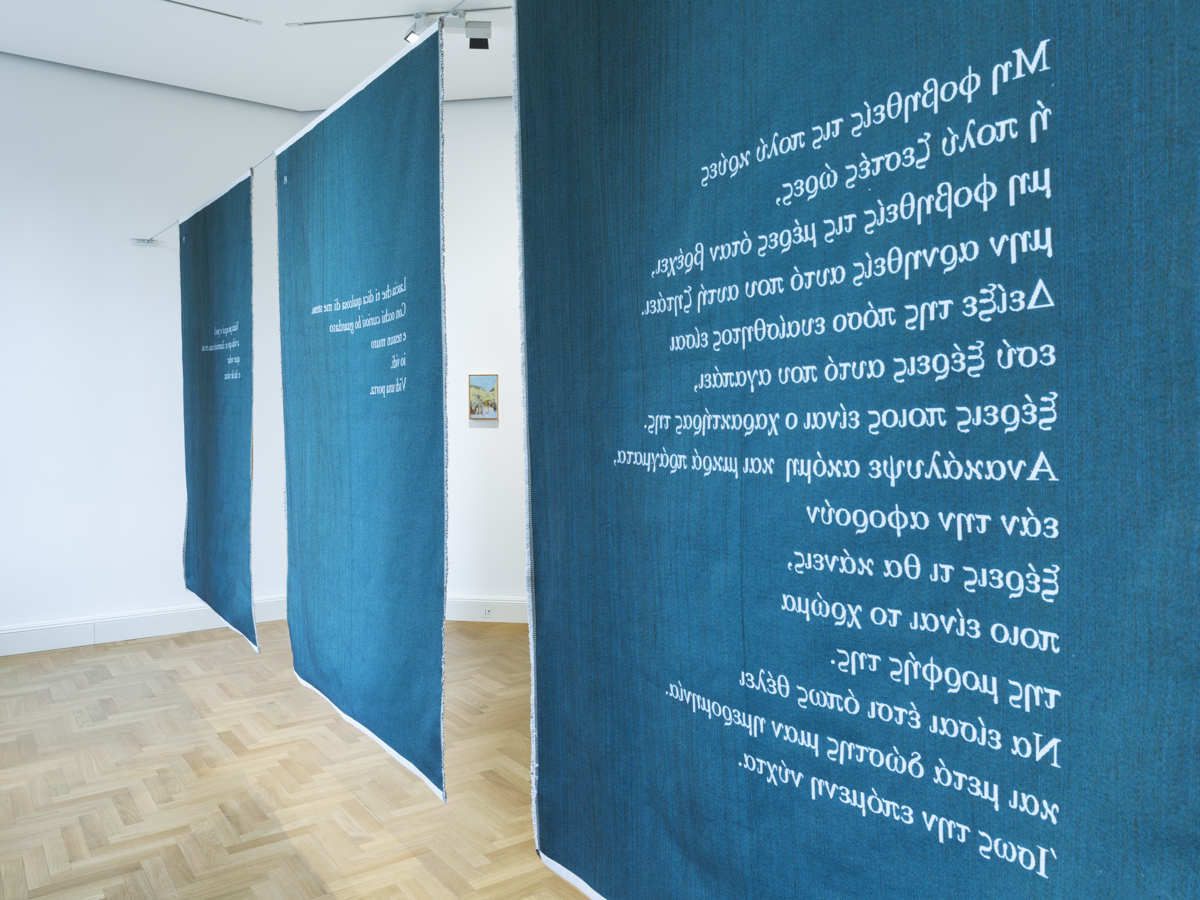Controcuore
Mario Milizia











The first solo show by Mario Milizia in the spaces of the VIASATERNA Gallery, Controcuore is the result of a combination of his recent work carried out using various media at different times, following the modus operandi of an artist who is both inclusive and disruptive, eclectic and specific.
“Controcuore” is the name of the cast-iron structure standing between the fireplace and its marble frame. An element of union, of protection, of adaptation, and also the title of the book in which Milizia brings together some of his poems written in 1992 and the analysis of his DNA, carried out through the Genographic Project with the aim of reconstructing his ancestral origins, which turned out to be Greek, Spanish and Portuguese. These poems have recently been translated into Latin and the languages of those countries, through a linguistic game which rewrites them, reinventing their sense. This is the origin of the seven tapestries on show, onto which the verses are sewn, originally produced using the cut-up technique. A technique drawn on at length, ever since the end of the 1950s, by Brion Gysin and William Borroughs, entailing the physical cutting up of one or more written texts in order to piece the elements back together as needs be.
“Controcuore” is the name of the cast-iron structure standing between the fireplace and its marble frame. An element of union, of protection, of adaptation, and also the title of the book in which Milizia brings together some of his poems written in 1992 and the analysis of his DNA, carried out through the Genographic Project with the aim of reconstructing his ancestral origins, which turned out to be Greek, Spanish and Portuguese. These poems have recently been translated into Latin and the languages of those countries, through a linguistic game which rewrites them, reinventing their sense. This is the origin of the seven tapestries on show, onto which the verses are sewn, originally produced using the cut-up technique. A technique drawn on at length, ever since the end of the 1950s, by Brion Gysin and William Borroughs, entailing the physical cutting up of one or more written texts in order to piece the elements back together as needs be.

